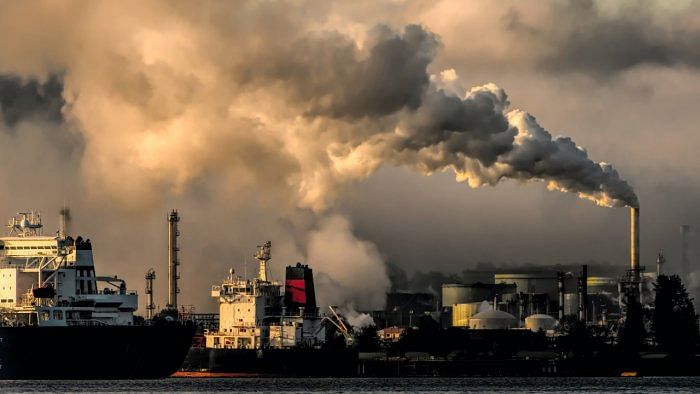
If the years of devastating droughts, floods, heatwaves, and wildfires since the Paris climate agreement was adopted have taught us anything, it’s that we have underestimated the pace of extreme, destabilizing climate change.
The world has warmed by about 1.1 degrees Celsius from preindustrial levels, much of it occurring since 1950, and the pace continues. That’s why it was so important that more than 100 countries joined a coalition led by the United States and the European Union last week to cut global emissions of the potent greenhouse gas methane by at least 30 per cent by 2030.
But delegates meeting at a world climate conference in Glasgow have more to do: For the security of the planet, they need to act further and faster to limit near-term temperature increases.
For starters, more nations must join the methane pact, including China, Russia, and India, the top three methane emitters in the world, and Iran, the ninth largest. (The United States, which unveiled its own aggressive plan against methane last week, is fourth, followed by Brazil, which has signed onto the agreement.) That, of course, sums up the climate change challenge: Borders can’t protect against planetary warming, so every country must join the fight, especially the big polluters.
For those that have joined the methane pact, their commitment must be met with real action, not talk, if we are to slow warming before the consequences become catastrophic. This is part of an essential mitigation strategy, together with the fast phaseout of coal and the protection of forests, for slowing climate change.
The other element of that strategy is reducing emissions of the most pernicious of climate pollutants — those that, along with methane, supercharge warming over the short term. Short of geoengineering the climate, this is the fastest way to slow global warming.
These superpollutants, as we call them, have the potential to upend critical natural systems, accelerating the melting of reflective Arctic sea ice and ice sheets in Antarctica and Greenland and the thawing of permafrost in the world’s boreal regions. That thawing will be disastrous for the climate if it ends up unleashing the vast quantities of methane and other greenhouse gases within the frozen soil.
Also Read | US pledges to 'sharply' reduce methane emissions
We know from measurements of air trapped in Antarctic ice that the amount of methane in the air has reached its highest level in at least 800,000 years. And since emissions of methane can be more than 80 times as potent in warming the planet over 20 years as carbon dioxide, methane cuts have a special role in limiting near-term temperature increases. Two other short-lived climate pollutants are also particularly potent: hydrofluorocarbons, primarily used in refrigeration and air-conditioning, and black carbon soot, caused by the incomplete combustion of fossil fuels, wood, and organic waste, like yard and farm scraps.
Reductions in these pollutants are possible with existing technology and could further limit temperature increases over the next couple of decades, avoiding three times as much warming by 2050 as strategies targeting carbon dioxide alone.
We’re making progress, but not fast enough.
In 2016, 197 countries agreed to reduce hydrofluorocarbon use by more than 80 per cent over the next 30 years, with the potential to avoid nearly half a degree Celsius of warming by the end of the century. Those countries need to speed up that schedule and provide additional financial support to help some low-income countries comply.
In California, clean air rules have reduced black soot carbon emissions by 90 per cent since the 1960s. This can be replicated elsewhere. In particular, the world needs to focus on black carbon emissions from oil and gas production in the Arctic. These particles darken the snow and ice, reducing the reflection of solar radiation in a region that is warming at three times the global rate, with the potential to influence global weather patterns. Reducing these emissions should be a global priority.
In short, we need a combined global strategy of deep cuts in carbon dioxide emissions while reducing emissions of methane and these other superpollutants. Otherwise, we’ll fail to limit near-term temperature increases and the potential for runaway warming. This should be an all-out effort by all countries.
Check out the latest videos from DH: